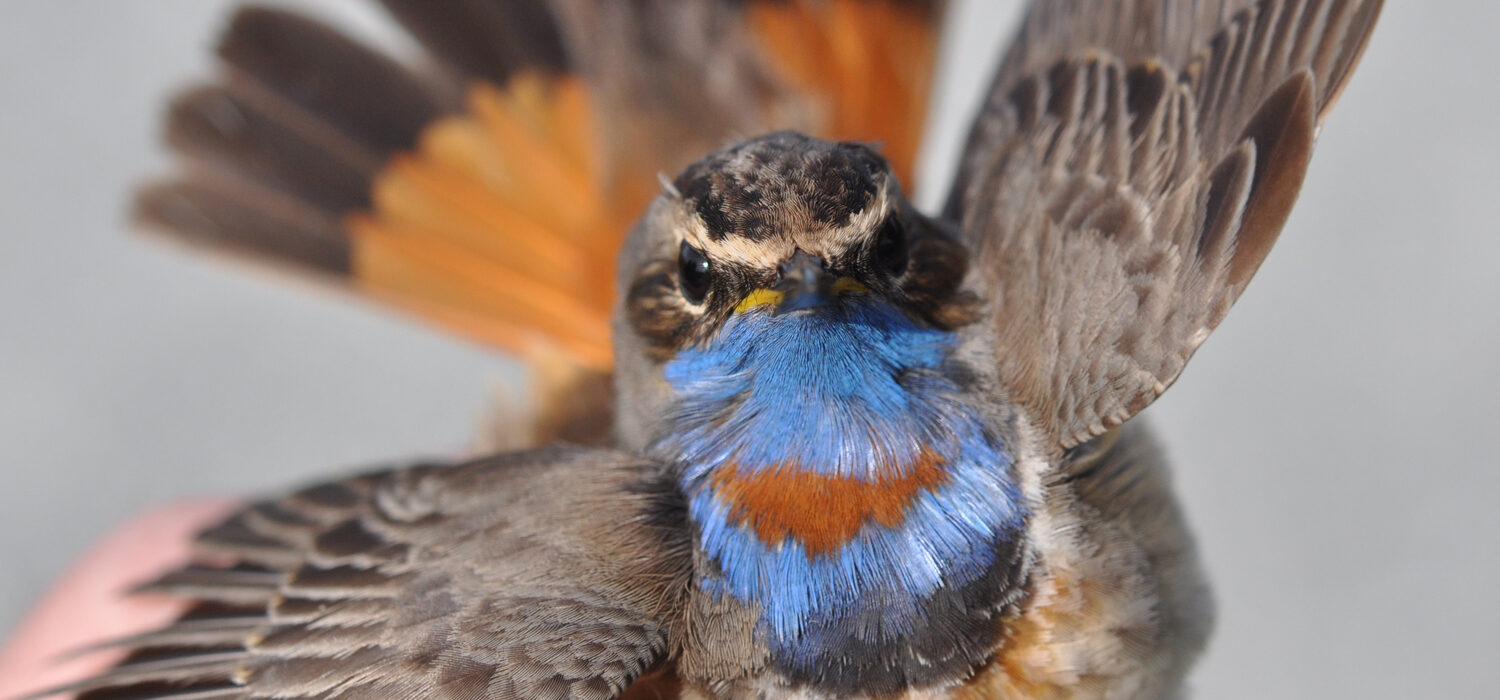Bird Ringing as a Scientific Method
The ringing (or banding) of birds is a scientific method for gaining knowledge about birds and the environments in which they live. In principle, the method is to fasten a metal ring around one of the legs of a bird. On the ring, a unique number and a contact address are printed.
The history of modern bird ringing began when a Danish man, Hans Christian Cornelius Mortensen, had the idea of fastening a ring with a number and address to a bird’s leg. Mortensen made his first attempt in 1890, but it was not until 1899 that he solved several practical problems and could start a more systematic practice of marking birds. His goal for doing this was to gather information on where birds flew, how long they lived, their age differences and ‘geographical races’, plus any other information such marking could lead to (Mortensen 1907).
DIFFERENT TYPES OF RINGS
Many types of rings have been used over the years. In Norway today, the rings are made of aluminium and stainless steel. Wear and tear can happen on both the inside and outside of rings. Birds that sit on their tarsus, for example several of the auks, mostly wear down the outside of the rings. Species that tend to walk on sand, for example waders, wear them down on the inside. External wear and tear can result in the unique number and contact address becoming unreadable, or that the ring eventually falls off.
The first rings to be used were of poor quality, and many were lost. In Norway, steel rings started to be used in the mid-1960s. These are so strong that they last a lifetime, even for the species that live the longest and wear them down the most. Nevertheless, letters and numbers can be worn away, even when the steel rings are used on species such as Black Guillemot and Common Guillemot. In the 1960s, a large number of Atlantic Puffins on the island of Røst were ringed with aluminium rings. In the 1980s, many of these birds were controlled, and with few exceptions, the rings were completely unreadable.
In addition to metal rings, coloured plastic rings have often been used. A bird might wear only one plastic ring with an engraved number and/or letter, or a combination of several differently coloured rings. For certain species (geese, for instance), a coloured ring with an engraved code can be fastened around the bird’s neck. This makes it easier to see the ring, and easier to identify the individual in the field.
INCREASED KNOWLEDGE
Traditionally, bird ringing has been used to increase our knowledge of bird behaviour. The most common questions we have wanted answers to are where birds have wintered, where their migration routes go, their important stopover sites and causes of death, how long they live and how fast they move (migrate). Now that this basic knowledge about various species has improved, the goals for bird ringing have become more nuanced. New goals and new content on the ring markings enable the study of such things as changes in bird-populations. This is an important contribution to current environmental monitoring. In many research projects, ringing is used as a sure method for recognising individual birds throughout their life.
Knowledge gained from ringing is often based on members of the public finding the ringed birds and reporting their finds to a ringing centre. It has, however, become increasingly common for scientists to seek out birds they themselves have ringed, and many research projects are now based solely on controls of one’s ‘own’ birds.
INTERNATIONAL COOPERATION
In Europe, the scientific and administrative cooperation for bird ringing is organised through the European Union for Bird Ringing (EURING). This organisation was established in 1963, and in 1977 EURING set up ‘The EURING Data Bank’. Here, data from all recoveries of birds ringed in Europe are stored in a standard format. As of today, more than 10 million entries of recovered birds are in the databank. This large body of ringing recovery data is made available to researchers throughout the world.
There is also world-wide cooperation on reporting ringed birds. If you send information about your find of a ringed bird to the address written on the ring—it is usually brief—this is sufficient for the information to get to the right ringing centre. On most rings used in Norway today, the address is STAVANGER MUSEUM, NORWAY.
The main goal of bird ringing is to gather data that can be used in researching, managing and mapping bird populations. Bird ringing is not a goal in itself, but a scientific method for generating goal-oriented results.
